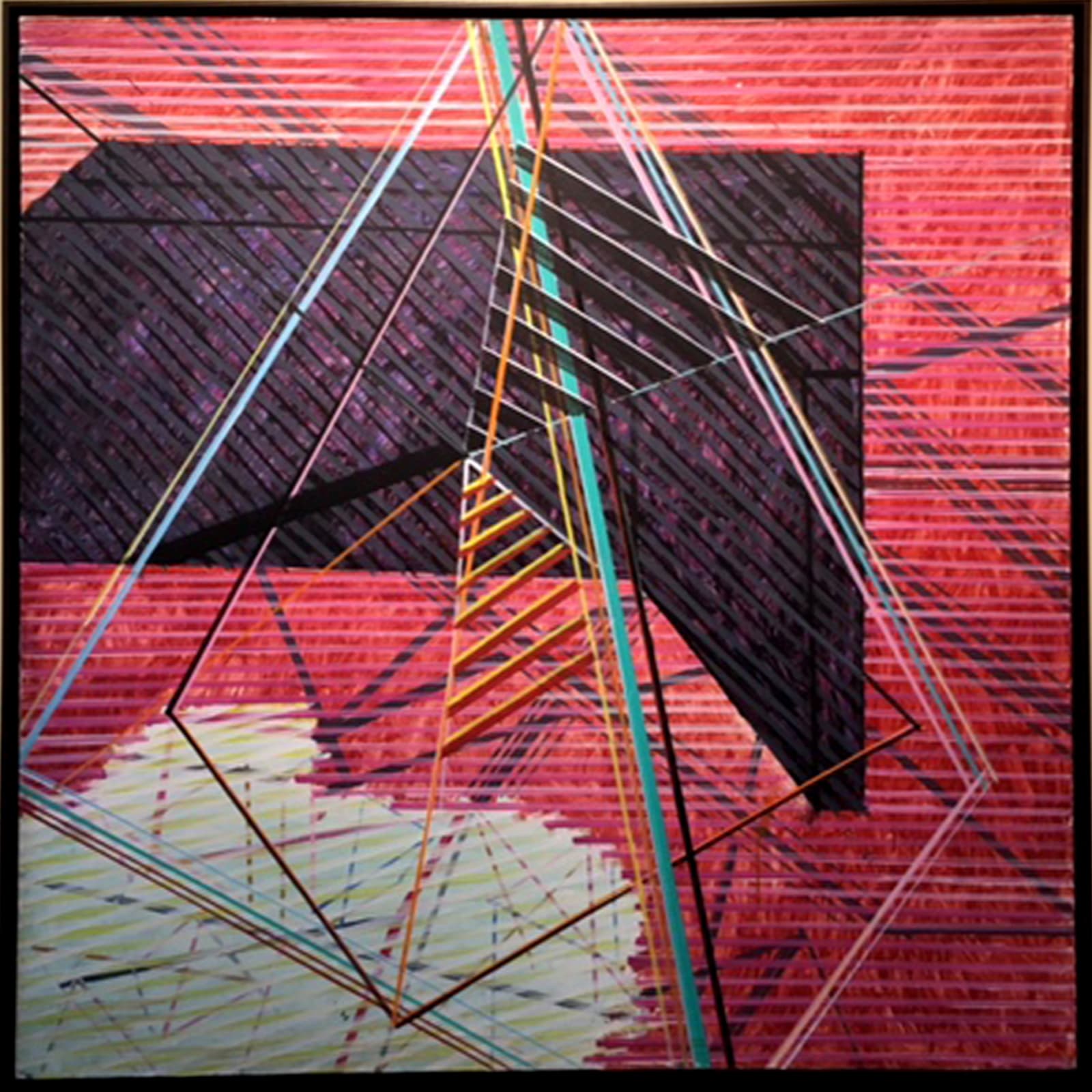Nabil Nahas b. 1949
Untitled (Geometric period), 1981
acrylic on canvas
121.9 x 121.9 cm
48 x 48 in
48 x 48 in
Copyright The Artist
This is a rare work from Nabil Nahas’ geometric period, which lasted from the late 1970s to 1982. It was acquired by Southeast Bank from the Robert Miller Gallery, where...
This is a rare work from Nabil Nahas’ geometric period, which lasted from the late 1970s to 1982.
It was acquired by Southeast Bank from the Robert Miller Gallery, where Nahas held his first three exhibitions, and held in that collection for decades until being recently acquired by a Florida collector.
Works on canvas from this period are extremely rate. One is in the Metropolitan Museum of Art (anonymous gift, 1981), others are in the collections of Tate Modern (acquired from the artist through Lawrie Shabibi, 2015), and Abu Dhabi Guggenheim (acquired from the artist through Lawrie Shabibi, 2015). The British Museum also acquired a group of works on paper from the period through Lawrie Shabibi in 2014.
Nahas’ works from 1977-1981 demonstrate his twin sources of inspiration – an early obsession with the geometrical abstraction of Islamic art, coupled with a desire to make sense of it within the context of recent innovations in American abstract art. Nahas’ quick progression between styles belies the technical finesse of his early works, and also the ground-breaking nature of these series: at the time very few artists of Middle Eastern origin had attempted to do something similar, and when they did often their work was trapped in a cycle of repetition.
Nahas studied in the United States instead of Paris, a more usual route for Lebanese art students at the time. As a student at Yale between 1971-3, Nahas personally encountered the artists Frank Stella, Al Held, Larry Poons, Robert Rauschenberg and Alex Katz amongst others. Stella and Poons made the biggest impact on Nahas’s works of the 1970s- both Stella and Poons’ work becoming increasingly hard-edged.
In the first works he exhibited in New York following his graduation at Yale, the first of three exhibitions at the Robert Miller Gallery, Nahas used geometric forms. His 1977 paintings, with their overlapping planes (at least three in each work), their emphasis on the diagonal and their pastel shades, were far removed from the rectangles of Mondrian and Albers, and also the works of Stella and Held. Rather, Nahas used geometry in a less recognizable way- the abstractions of these paintings do not feel like geometry so much as decorative motifs- they demonstrate Nahas’ immersion in Islamic art.
Nahas’ 1978 paintings show dramatic changes- the delicate colours and subtle overlaps gave way to bolder tonalities and a harder-edged Euclidean geometry. Between the years of 1979-1981 Nahas’ sharp edges again gave way to thickly layered painting with a blurring of edges, which led to further experimentations with painting.
It was acquired by Southeast Bank from the Robert Miller Gallery, where Nahas held his first three exhibitions, and held in that collection for decades until being recently acquired by a Florida collector.
Works on canvas from this period are extremely rate. One is in the Metropolitan Museum of Art (anonymous gift, 1981), others are in the collections of Tate Modern (acquired from the artist through Lawrie Shabibi, 2015), and Abu Dhabi Guggenheim (acquired from the artist through Lawrie Shabibi, 2015). The British Museum also acquired a group of works on paper from the period through Lawrie Shabibi in 2014.
Nahas’ works from 1977-1981 demonstrate his twin sources of inspiration – an early obsession with the geometrical abstraction of Islamic art, coupled with a desire to make sense of it within the context of recent innovations in American abstract art. Nahas’ quick progression between styles belies the technical finesse of his early works, and also the ground-breaking nature of these series: at the time very few artists of Middle Eastern origin had attempted to do something similar, and when they did often their work was trapped in a cycle of repetition.
Nahas studied in the United States instead of Paris, a more usual route for Lebanese art students at the time. As a student at Yale between 1971-3, Nahas personally encountered the artists Frank Stella, Al Held, Larry Poons, Robert Rauschenberg and Alex Katz amongst others. Stella and Poons made the biggest impact on Nahas’s works of the 1970s- both Stella and Poons’ work becoming increasingly hard-edged.
In the first works he exhibited in New York following his graduation at Yale, the first of three exhibitions at the Robert Miller Gallery, Nahas used geometric forms. His 1977 paintings, with their overlapping planes (at least three in each work), their emphasis on the diagonal and their pastel shades, were far removed from the rectangles of Mondrian and Albers, and also the works of Stella and Held. Rather, Nahas used geometry in a less recognizable way- the abstractions of these paintings do not feel like geometry so much as decorative motifs- they demonstrate Nahas’ immersion in Islamic art.
Nahas’ 1978 paintings show dramatic changes- the delicate colours and subtle overlaps gave way to bolder tonalities and a harder-edged Euclidean geometry. Between the years of 1979-1981 Nahas’ sharp edges again gave way to thickly layered painting with a blurring of edges, which led to further experimentations with painting.
Provenance
Robert Miller GallerySouth East Banks
Private Collection, Florida
